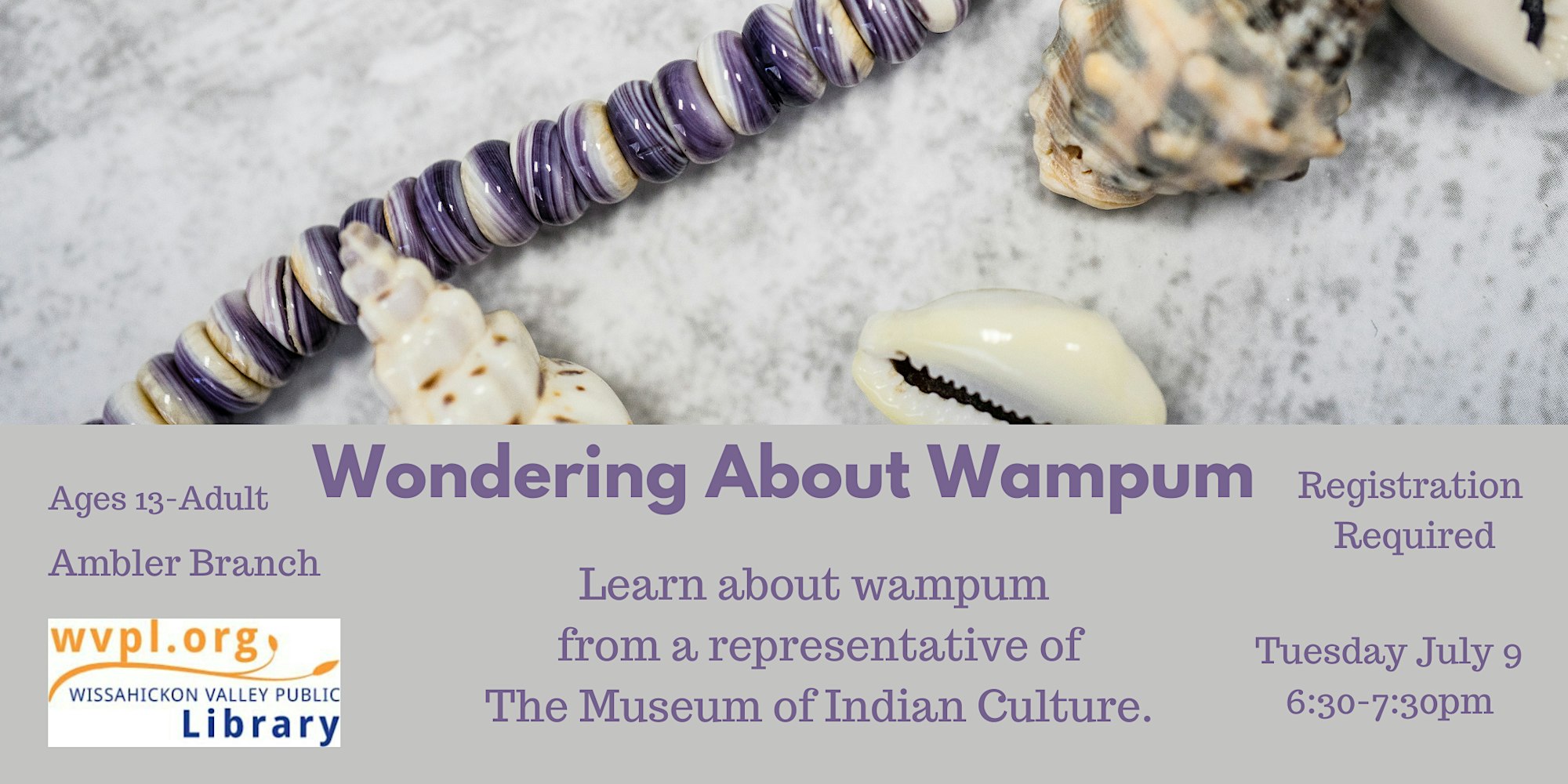Please be sure to check the event organizer’s website for any last-minute changes or cancellations prior to attending.
Have an event that will fit well on our calendar?

- This event has passed.
Wondering About Wampum

Wondering About Wampum. Presented by the Museum of Indian Culture
a Special Program is for Teens and Adults
Although shell beads have been around for thousands of years, the cylindrical white and purple beads we recognize as wampum were mainly produced after European contact. Steel tools facilitated drilling the long, small diameter holes. These beads held more value than their beauty. Colonists used them as currency. Native communities used them to commemorate important events or send messages.
Join Chris Applegate from the Museum of Indian Culture in Allentown, PA to learn more about how wampum beads were produced and traded. Once in Native hands, the beads were made into strands or woven into “belts” that could be used to identify the bearer, send a message, or record a treaty.
Methods of bead weaving are demonstrated. The historic and current significance of well-known belts including the William Penn Belt, the Hiawatha Belt, and the Two Row Belt is covered.
After the presentation, attendees are encouraged to use the pump drill and bow looms that have been demonstrated.
Accessibility Check-in: please contact us if you would like an accommodation to access this program
Details
- Date: July 9, 2024
-
Time:
6:30 pm - 7:30 pm
- Website: https://www.eventbrite.com/e/wondering-about-wampum-tickets-887885879567
Venue
- Wissahickon Valley Public Library Ambler Branch
-
209 Race Street
Ambler, PA 19002 United States

